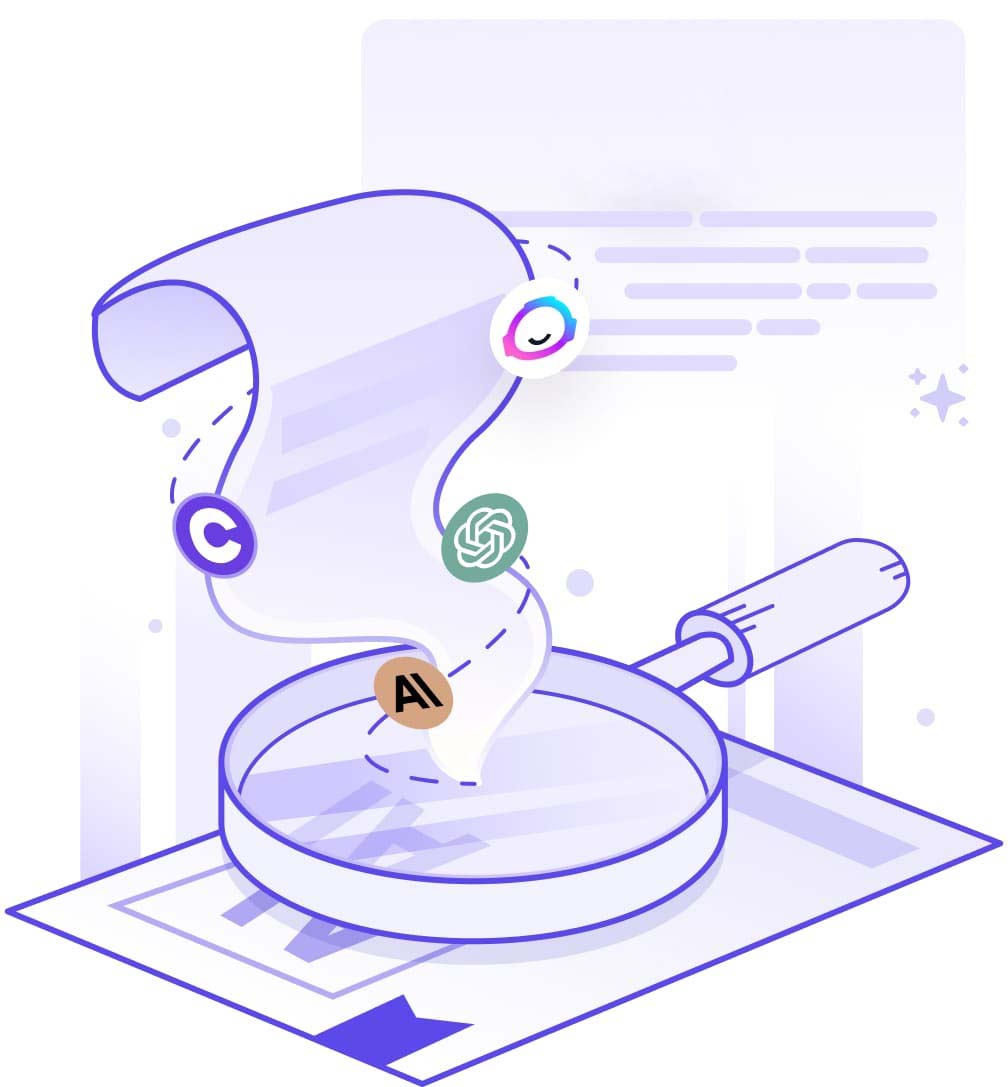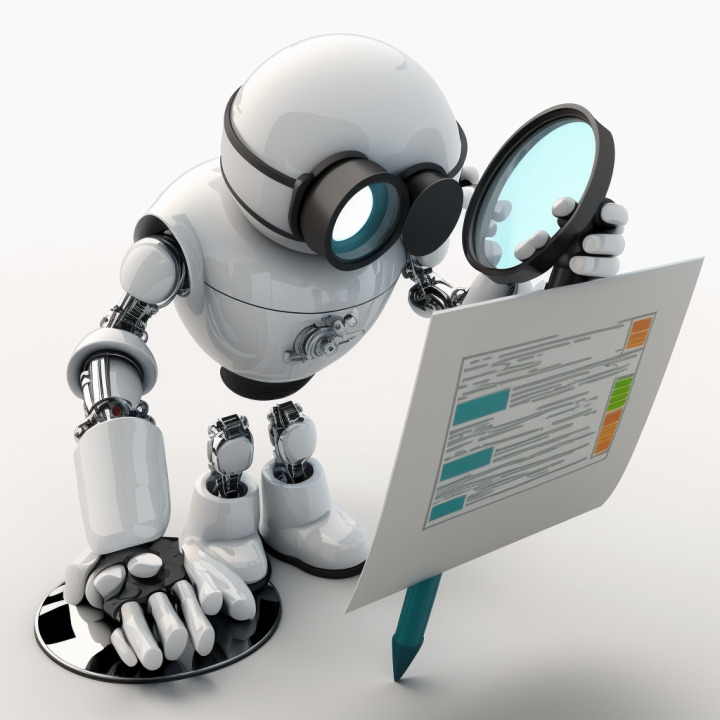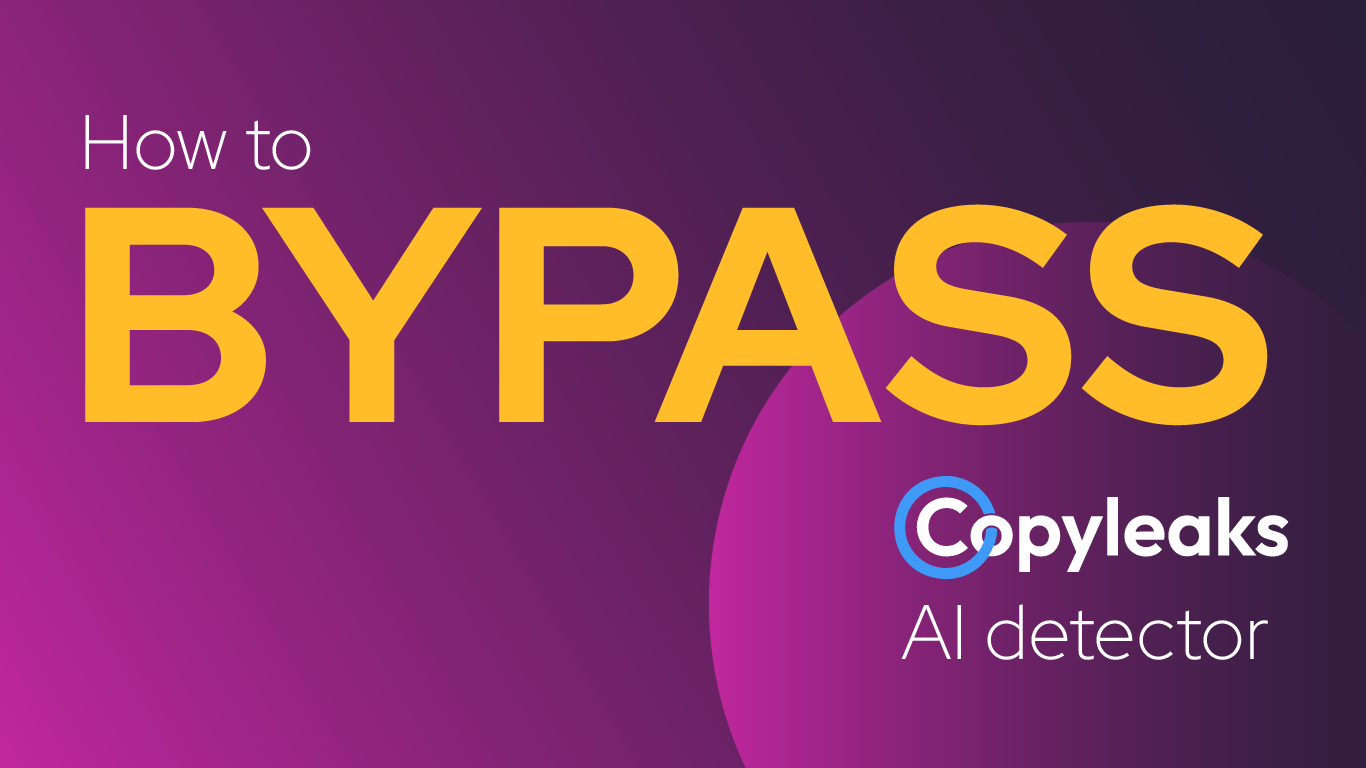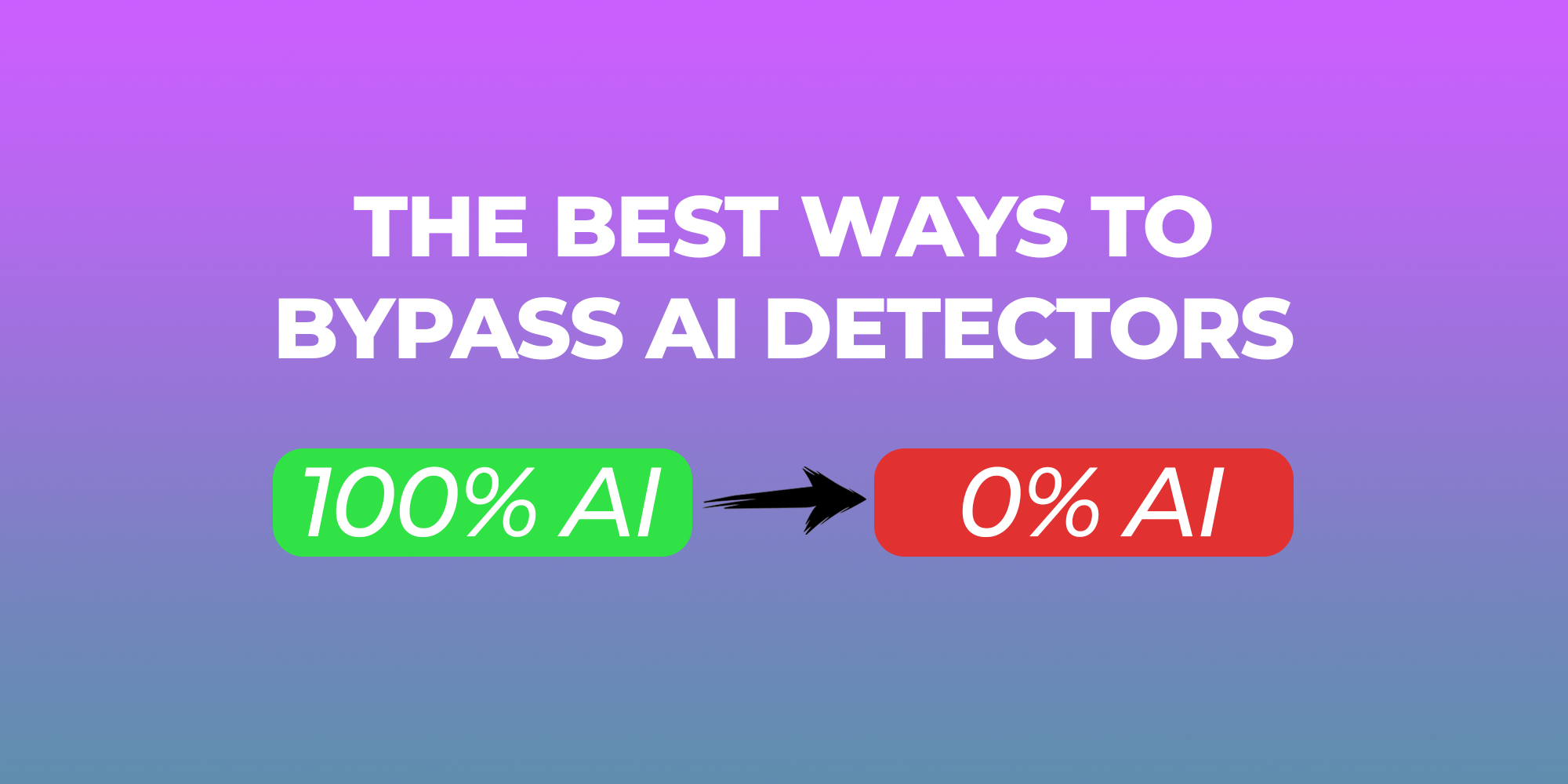Artificial intelligence (AI) is transforming many fields, and content creation is a prime example. AI-powered plagiarism detectors like CopyLeaks play a crucial role in ensuring content integrity and originality. Understanding how these systems function and how to bypass them can be critical in specific contexts. This comprehensive guide delves into the technical aspects behind the CopyLeaks AI Detector, its mechanisms, and methods some might employ to circumvent its detection.
The Current Phase of Copyleaks Content Detection
AI-driven plagiarism detectors have become indispensable tools for educators, publishers, and content creators. These systems utilize sophisticated algorithms to identify copied or paraphrased content, ensuring the originality of the work. CopyLeaks is one such advanced tool that uses machine learning and natural language processing (NLP) to detect duplicate content across various formats and languages.
Copyleaks AI Detector: Purpose and Scope
This guide will explore the intricate workings of the CopyLeaks AI Detector, outline methods to bypass its detection, and discuss the practical implications of such practices. We will cover the following key aspects:
- Understanding CopyLeaks AI Detector
- Techniques to Bypass Detection
- Practical Implications and Considerations
- Enhancing Productivity with AI Tools
- Strategies to Bypass CopyLeaks AI Detection
- Key Features of CopyLeaks
- Future Directions and Predictions
- Conclusion
Understanding CopyLeaks Detector
opyLeaks employs cutting-edge AI technologies to scan and compare text for similarities. Its primary components include:
Natural Language Processing (NLP): This allows the detector to understand and process human language, identifying paraphrased content. NLP enables the system to break down text into its fundamental components, such as syntax, semantics, and context. By doing so, CopyLeaks can detect even the most subtle forms of paraphrasing that might elude simpler detection methods.
Machine Learning Algorithms: These algorithms learn from a vast database of texts, improving detection accuracy over time. By analyzing patterns and trends in the data, machine learning models can predict and identify instances of plagiarism with increasing precision. This continuous learning process ensures that CopyLeaks remains up-to-date with new techniques and trends in content creation.
Deep Learning Models: Advanced neural networks analyze the structure and semantics of text, enhancing the system’s ability to detect even subtle similarities. Deep learning models can identify intricate patterns within the text that traditional algorithms might miss, providing a robust defense against sophisticated plagiarism tactics.
Techniques to Bypass Detection

Paraphrasing is a common technique used to bypass plagiarism detectors. There are several methods to achieve this:
Manual Paraphrasing: Rewriting content in your own words while maintaining the original meaning can evade detection. This requires a strong command of language and subject matter understanding. Manual paraphrasing allows for a more nuanced and accurate rephrasing of content, which can be harder for AI detectors to catch.
Automated Paraphrasing Tools: Tools like QuillBot rephrase text while attempting to retain the original meaning. However, these tools are not foolproof and may still be detected by advanced AI. Automated tools often lack the contextual understanding that a human writer possesses, leading to less effective paraphrasing.
Synonym Replacement: Replacing words with their synonyms can help bypass detection. Overuse can make the text awkward and less readable. While this method can be useful for simple changes, it often results in text that feels unnatural and disjointed.
Text Reordering: Changing the order of sentences or paragraphs can confuse the AI detector. This method can disrupt the logical flow of the text, making it harder to read. Reordering text requires careful planning to maintain coherence and readability.
Using Homoglyphs: Substituting characters with visually similar ones from other languages (e.g., replacing ‘a’ with ‘а’ from the Cyrillic alphabet) can trick some detectors. However, this is often detected by more advanced systems. Homoglyph substitution can be effective but is usually caught by sophisticated AI models that recognize these tricks.
Embedding Text in Images: Converting text into images can evade text-based detectors. While effective, this method is not practical for most applications and can be easily countered by OCR (Optical Character Recognition) technology. This technique is often used in highly specialized contexts where text-based detection is a significant concern.
Mixing Multiple Sources: Combining segments from different sources and adding original content can reduce the likelihood of detection. This method requires careful integration to maintain coherence. Mixing sources allows for a more diverse and original text, but it can be challenging to maintain a consistent voice and style.
Practical Implications and Considerations
Understanding the methods to bypass AI plagiarism detectors like CopyLeaks is essential for various applications. Here are a few considerations:
Quality of Content: Methods on an AI rewriter to human often decrease the quality and readability of the content. When content is manipulated to evade detection, it can lose its original meaning and flow, making it less engaging and harder to understand.
Reputation Risks: Getting caught using such methods can damage personal and professional reputations. The consequences of being found out can be severe, ranging from academic penalties to loss of professional credibility.
Time and Effort: Techniques like manual paraphrasing and text reordering require significant time and effort. While they can be effective, they also demand a high level of skill and dedication, which might not always be feasible.
Technological Advancements: As AI technology evolves, so do the methods for detection. Techniques that work today might not be effective tomorrow. Staying ahead of these advancements requires continuous learning and adaptation.
Enhancing Productivity with AI Tools
Utilizing AI tools alongside budget-friendly productivity apps can significantly boost efficiency. Here are some notable recommendations:
Netus AI: A powerful AI tool designed to enhance productivity and streamline content creation. It offers advanced features to humanize AI-generated text, making it undetectable by AI detectors like CopyLeaks. By leveraging cutting-edge technology, Netus AI ensures your content remains authentic and compliant with SEO guidelines.
QuillBot: A comprehensive AI productivity writing tool with features like plagiarism and grammar checking, content detection, paraphrasing, summarizing, and translating. An affordable alternative to Grammarly, QuillBot provides excellent writing assistance.
Miro: An AI-powered app for brainstorming, organizing, note-taking, and presenting ideas. It converts notes and essays into visually appealing mind maps, flowcharts, and presentations using over 2500 free templates.
Scrivener: A powerful writing software designed for long-form content creation. It helps writers organize their thoughts, research, and drafts in one place, making it easier to produce high-quality work.
Evernote: A versatile note-taking app that allows users to capture ideas, organize notes, and collaborate with others. Its AI features help users find relevant content and stay organized.
Strategies to Bypass CopyLeaks AI Detection
AI Humanizer: AI rewriter to human makes your content natural and human-like. It maintains the original meaning while making the text undetectable by AI detectors. This tool can effectively mimic human writing patterns, making it harder for detectors to identify AI-generated content.
Manual Revisions: Use specific and detailed prompts to generate unique content, change sentence lengths and formats, and include personal anecdotes or real-life experiences. Manual revisions add a personal touch that AI-generated text often lacks.
Additional Tools: Text-Cloaker.com, Hix.ai, and Undetectable.ai are tools known for their effectiveness in bypassing AI detection. These tools offer various features to manipulate text and evade detection, providing users with multiple options.
Custom AI Models: Developing custom AI models tailored to specific content creation needs can help bypass detection. These models can be trained to produce text that mimics human writing styles and patterns.
Content Spinning: Using content spinning techniques to create multiple versions of the same text can reduce the likelihood of detection. This method involves changing words, phrases, and sentence structures to produce unique variations of the original content.
Key Features of CopyLeaks
Complete AI Model Coverage: Detects AI-generated text from various models. CopyLeaks’ comprehensive coverage ensures that it can identify text generated by popular AI models, providing a robust defense against plagiarism.
Unprecedented Speed and Accuracy: Provides 99.1% accuracy with a low 0.2% false positive rate. CopyLeaks’ high accuracy ensures that genuine content is not falsely flagged, while its speed allows for quick detection.
Plagiarism and Paraphrased AI Content Detection: Identifies AI-generated text that may be plagiarized or paraphrased. This feature ensures that even subtly altered content is detected, maintaining content integrity.
Source Code Detection: Identifies AI-generated source code. CopyLeaks’ ability to detect AI-generated code is crucial for ensuring the originality of software and programming assignments.
Multi-Language Detection: Supports a wide range of languages. This feature makes CopyLeaks a versatile tool for detecting plagiarism in diverse linguistic contexts.
Future Directions and Predictions
As AI technology continues to evolve, so will the methods to detect and bypass AI-generated content. Ongoing research and development in AI detectors like CopyLeaks will likely enhance their accuracy and robustness. Conversely, tools and techniques to humanize AI-generated content will also advance, creating a continuous cycle of adaptation and counter-adaptation.

Enhanced Contextual Understanding: Future AI detectors will likely have improved contextual understanding, allowing them to detect more nuanced forms of paraphrasing and content manipulation. This will make it harder for techniques like synonym replacement and text reordering to evade detection.
Integration with Other Technologies: AI detectors may integrate with other technologies, such as blockchain, to create immutable records of original content. This integration can provide additional layers of security and verification.
Real-Time Detection: Advances in computing power and AI algorithms may enable real-time detection of AI-generated content. This would allow for immediate identification and correction of plagiarism, improving the overall efficiency of content creation and verification processes.
Adaptive Learning Models: AI detectors will continue to learn and adapt to new techniques used to bypass them. These adaptive learning models will ensure that detectors remain effective against emerging threats and trends in content manipulation.
Ethical Considerations: As AI detectors become more sophisticated, ethical considerations around their use and potential biases will become increasingly important. Ensuring that these tools are used fairly and transparently will be crucial for maintaining trust and credibility.
Related Posts
Through digital leadership we empower people to leverage the opportunities in global economy



